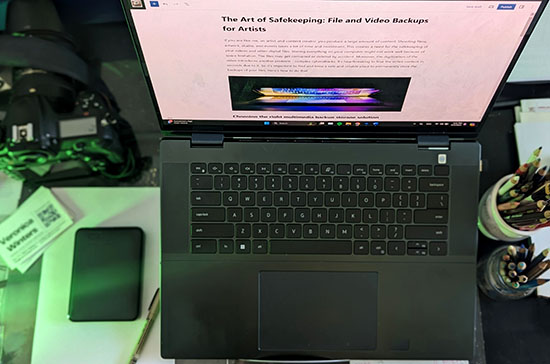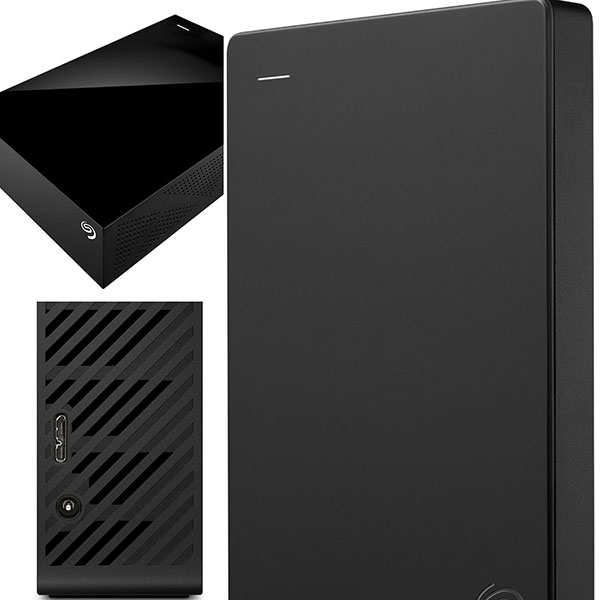If you are like me, an artist and content creator, you produce a large amount of content. Shooting films, artwork, studio, and events takes a lot of time and investment. This creates a need for the safekeeping of your videos and other digital files. Storing everything on your computer might not work well because of space limitation. The files may get corrupted or deleted by accident. Moreover, the digitization of the video introduces another problem – complex cyberattacks. It’s heartbreaking to lose the entire content in seconds due to it. So it’s important to find and keep a safe and reliable place to permanently store the backups of your files. Here’s how to do that.

Choosing the right multimedia backup storage solution
Multimedia data takes lots of space and the storage tools may differ. First, consider the initial platform you’re using. For example, if you are a MacBook user, you can connect your Mac to iCloud for automated backups. Here are several options to do this:
- you may sync the computer to another Mac to transfer data to it.
- you may transfer the videos to an external hard disk that you can connect to your computer to transfer the files manually.
- you can also buy storage space from other cloud-based solutions and do automatic backups.
- Other strategies about how to backup Mac include saving your files in email.
If you’re a PC user like me, you can back up your files to a cloud platform like Google drive or Dropbox. You have to buy storage space there to keep large files on their cloud.
Backups & security
Both high-resolution digital files of art and video take a lot of space. If you produce your video content daily and want to keep it safe, you have to use a backup platform that offers reliable storage space and strong security defenses against the cyberattacks. The chosen platform should allow you to add your own layer of security and optional upgrades. Choose a strategy based on the following.
● Technology available. Choose a program that runs on the latest technology to benefit from the latest security features and upgrade plans.
● Location of the solution. Is it in the cloud, data lakes, remote servers, or local disks?
● Backup types. Some solutions allow full, differential or incremental storage backups.
● Encryption and recovery needs. Encryption boosts your data safety. Pick a platform that lets you recover your data easily.

Organizing your videos for backups
Due to the increasing volume of digital files produced, you must set up and maintain an organized file system. This saves you time whenever you need to locate, share, or edit your files. Have separate file folders with names and dates for easy access. For example, I have a big ‘art’ folder that’s subdivided into many smaller folders like ‘Art 2018.’ Or you may want to organize the folders with the names based on location, like ‘Greece 2018,’ etc. I also delete my so-so files and keep the best ones only for better organization and future use.
Creating automated backups
An automated backup relies on a program to run the processes that allows a fast recovery of files. Automation saves you time, cuts on stress and minimizes errors. It ensures consistent protection and progress of your videography work.
Choosing the right backup systems
The backup platforms have different pricing, storage space, and support. Here are examples of video backup systems that you may choose for your art studio or office.
Hardware

This storage relies on hardware located locally or remotely. You may buy an external hard disk that looks like a black box to use it at home. For that, you can buy a Desktop external hard drive with a different capacity levels that’s between 8-24 TB (terabytes of memory space). Price varies depending on size anywhere between $145-600+ You plug it in to your computer with a USB cable and transfer the files for backup or storage. The Desktop Hub and Expansion External Hard Drive work in similar fashion. You can keep these hard disks in your studio for easy access.
You may also connect your computer with either a local or remote desktop server as a backup system that you can buy and set up at home or studio. You can set it up to make automated backup of either all files or specific folders from your main computer.
You can also use a large 128GB-512GB Extreme PRO SDXC Memory Card that you normally use for your digital camera. It holds quite a lot of video and digital images. However, these cards can become unreadable in a few years or a specific file can get corrupted because of various reasons.
The problem with all hardware is that it fails at times. Solar flares or other problems can cause permanent file corruption. I had a folder with my files shot in Nicaragua. A vast majority of them became unreadable because something happened to the hard disk on my computer and affected that particular folder in ten years after my trip. That’s why it’s best to store the most important files using a cloud-based service.
SaaS
Application-based, SaaS (software as a service) models let you use storage space based on demand. It allows you access art and video editing apps online. You don’t need to download anything or configure complex software. SaaS is a good option for people who work collaboratively because of a quick and easy access and system integration.
Conclusion
Your choice of storage should be based on the amount of data you produce and want to keep safe. Backups enhance data security for video artists. Consider the number of videos you produce monthly. Consolidate your visual files and segment them for easy data storage. Choose the backup platform that’s secure, scalable, and affordable.